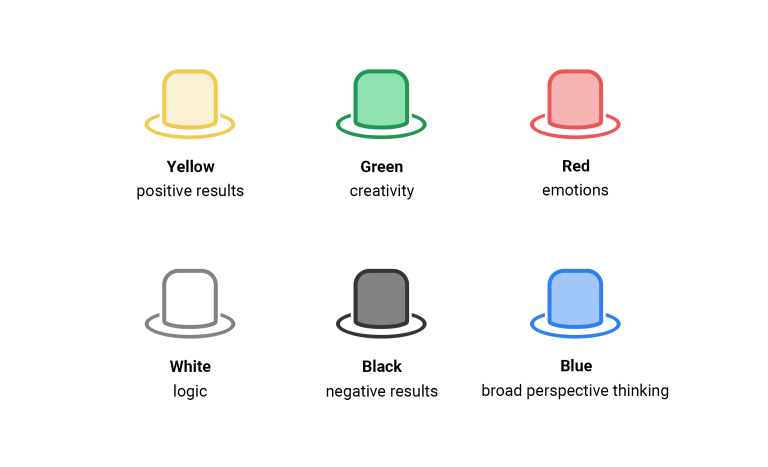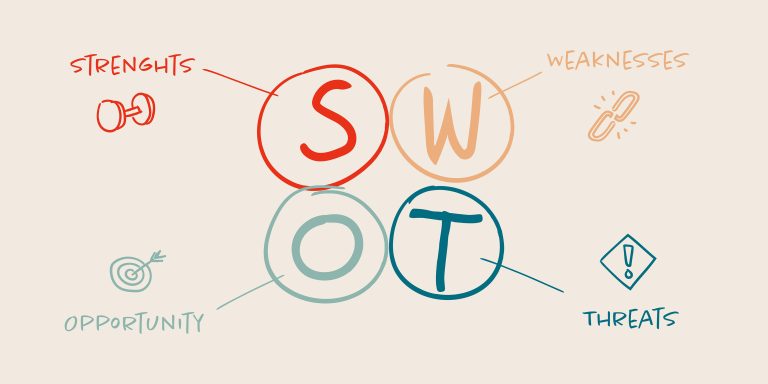What is Business Analysis and Why do Business Analysts Use it?
Data is what makes the world go around these days. As California Marimar University states: "Data analytics helps companies optimize their operations, reduce costs, and increase efficiency by identifying patterns and trends that would otherwise go unnoticed."

Understanding how to perform business analysis is key to a company's improvement. In this article, we will go over the benefits of business analysis, tips on how to do it, and what exactly you need to become the best business analyst.
We also encourage you to check out our flipbooks at Publuu to convey all your business analysis in a concise and precise manner. So, without further ado, let's dive in!
What is Business Analysis?
Business analysis is a process of gathering data through specific techniques to identify the business's needs. It involves recommending changes and offering solutions that add value for the company.
It's a data-driven analysis that can optimize software and technical aspects of your business, but also organizational, policy-based, and strategic planning.
As the International Institue of Business Analysis points out:
![]() The business analysis approach forms the backbone of successful projects.
The business analysis approach forms the backbone of successful projects. ![]()
"It provides a roadmap for stakeholders, enhances communication, mitigates risks, and ensures alignment with business objectives. While investing time in planning may seem burdensome, it significantly reduces the risk of project failure."
Main Goals of Business Analysis
We live in the ever-changing landscape of innovation. Technological advancement demands businesses to always optimize their processes to not get left behind. To navigate this sea, companies need a plan. And that is the main goal of a business analysis.
The work of business analysts is focused on guiding the organization through transitions to make it more competitive and prepared for digital and real-life challenges. An agile business analysis can help with business process improvement and protect it from external factors and potential roadblocks.
Who Uses Business Analysis?
So, now that we know what we are dealing with, let's go over the question of who uses business analysis in their everyday work.
-
Business analysts - it's pretty straightforward - business analysis work is oftentimes done by professionals in the field; they perform financial analysis, enterprise analysis, present solutions, and foresee potential roadblocks;
-
Data analysts - they are responsible for finding out the areas for improvement, based on the information patterns they have gathered;
-
Software developers - similarly to data analysts, they create technologies that can subsequently help to grow the business; their analysis may be key to creating apps and ideas that can solve business problems;
-
Information security analyst - it's an overseer role, someone who uses business analysis to not only grow the company's potential but also to protect it from potential threats; it's a key role in every company, as information security is essential for providing quality results.
-
Quantitative analysts - those are the professionals who implement and design algorithms and statistical models for financial reasons; their role as business analysts is to incorporate hard mathematical data into reality.
-
HR - this department uses business analysis to improve the management of human resources and develop training programs to prepare them for changes in the structural organization.
![]() For more details on how financial plan plays a role in this, check our guide!
For more details on how financial plan plays a role in this, check our guide!
Top 10 Business Analysis Techniques
Now that we know what we're dealing with, let's go over some key techniques when it comes to data analysis.
Brainstorming
Brainstorming is the easiest way of creating a business analysis. It allows stakeholders to identify the company's needs and try to find solutions for potential challenges by considering various perspectives. It’s often enhanced by the Six Thinking Hats technique, which includes different perspectives like:

-
Potential positive results (Yellow Hat) - looking for what could go right;
-
Creativity (Green Hat) - finding out new ways of approaching different challenges;
-
Emotions (Red Hat) - it's the heart of a discussion, where stakeholders feel something, but do not yet have the data to back it up;
- Logic (White Hat) - it's focused on solutions based on the data analysis;
-
Negative results (Black Hat) - looking for potential bad outcomes;
- Broad perspective thinking (Blue Hat) - not focusing on the details, but looking at what's the end result;
Thanks to that technique, stakeholders can hear different opinions on the topic and can open their minds to potential solutions.
SWOT Analysis
SWOT is an acronym - Strengths, Weaknesses, Opportunities, and Threats. It identyfies the internal and external factors that influence the company's performance.
If done correctly, it can show you how to convert the company's weak points into strengths and where to look for potential roadblocks. There are a few questions that can help you in creating a SWOT analysis:
-
Strengths - What is your company's strongest suit? Where does it beat the competition? What part of your company is the most reliable?
-
Weaknesses - Where do you lack experience? Which department is not doing its job correctly? How can you help it to grow?
-
Opportunities - Where can you invest your time? What can you do for future growth? Where is your company going to be in a few years?
-
Threats - What are the potential issues coming your way? What are the external factors that can influence your business? How can you prepare for it?
Creating a well-drafted SWOT analysis can help you examine the current state of your business and the potential to grow. Additionally, it can help you better understand the limitations of the company and potential issues coming your way. It's a great all-round strategy that's being used in various fields.

MOST Analysis
Another acronym on our list - the MOST analysis - stands for Mission, Objective, Strategy, and Tactics. It aims to present the organization's objectives and activities and see how those correlate to the mission and vision.
It helps to foresee potential roadblocks and provides tactics that companies can use to avoid them. It's essential to evaluate business strategies that rely on the values and mission being in alignment with the financial and business goals.
Business Process Modeling (BPM)
BPM is used to analyze and improve the organization's processes and foresee the business needs. This technique focuses on the company's current operational state and analyzes it to find gaps and challenges that can be identify early before they become a problem.
It's pretty simple - if you have an e-commerce business, you may need a lot of server power to keep it running. But, seeing how the sales are going up, it may be necessary to buy a bit more space to keep everything running smoothly.
PESTLE Analysis
PESTLE stands for Political, Economic, Social, Technological, Legal, and Environmental. Those are the most important factors that influence business planning on a grand scale.
Those external factors can change the outcome of any business operation in an instant, so keeping a close eye on those factors can be crucial for running a successful business.

Of course, if you are running a small business, this will probably not be something that you will have to consider as much. The environmental or political elements may not be the key threats to keep in mind for a small business like a flower shop.
![]() Looking for some tips for your small business? Check marketing ideas guide in our Knowledge Base!
Looking for some tips for your small business? Check marketing ideas guide in our Knowledge Base!
Nevertheless, for larger corporations, it's essential to understand those factors and include them in your business analysis.
Case Modeling
Case modeling is a great way of understanding your business based on how the users perceive it. It's focused on spots where users interact with the company's products and services. So, this kind of analysis is great for digital stores that can optimize specifically those points of interaction.
With case modeling business analysis, you will be able to better understand what your users are going through and create a more appealing UX design.
User Narrative
Another user-based business analysis is - the user narrative strategy. With this approach, you can focus on user experiences and challenges. It's based on a specific user persona that can provide insight into who you are target to.
![]() Read more here: How to find target audience
Read more here: How to find target audience
As with case modeling, this is also highly popular in software companies. Creating a user persona can help companies to highlight where the users may have issues with the buying process and what can be optimized more.
Publuu Analytics
Publuu Analytics is a great way of tracking your documents and implementing this analysis into your business strategy. You can check out how many times your document was opened, which pages of your flipbook were the most interesting for the readers, and how your audience interacted with your document.

It's an advanced document-tracking system that you can analyze in real-time! This kind of analysis can help you in planning for the future and converting it into profit.
CONVERT YOUR PDF DOCUMENT NOW!
CATWOE
Next, we have CATWOE - Clients, Actors, Transformation, World View, Owner, and Environmental Constraints. It's similar to the PESTLE analysis we have mentioned before, but it also considers internal factors, not just external ones.
It considers ethical aspects and data integrity and provides a comprehensive approach to align stakeholders under one vision.
Requirement Analysis
Requirement analysis aims to fill the need that was proposed by stakeholders. For example, let's say that you're constructing a building. Stakeholders might suggest arguments for additional safety measures to protect workers and prevent potential litigation.
Business analysts need to go through multiple interviews to find out the best solution to the requirements placed upon them. Requirement analysis is a great way of understanding what lies within the structure of a company.
Non-functional Requirement Analysis
In the same realm, we have the non-functional requirement analysis that aims to fill in the blanks of changed technology solutions. It's often used by digital companies when new technology solutions are required to meet market demands. The main difference is that it's a necessity rather than a concept that was brought up by stakeholders.
Business Analysis Process - How to Do It in 8 Steps!
-
Step 1 - Clarify the business analysts' role in the whole process and find out who are the main stakeholders.
-
Step 2 - Name what are your objectives; see who you are catering to and if any potential conflicts need to be amended.
-
Step 3 - Set the scope of your analysis; make sure to not go overboard; if the scope is too broad, you will not succeed in implementing changes.
-
Step 4 - Create a business analysis plan; add all the necessary items such as timetables, milestones, and deliverables.
-
Step 5 - Here, you need to have actionable requirements; what do you need and how to get it?
-
Step 6 - Consult with the IT department; most changes will require technical solutions, so an analyst needs to have a good relationship with technicians.
-
Step 7 - Oversee the implementation; create documentation on how to implement the changes and teach the users how to do it.
-
Step 8 - Review and revise; see what worked and what needs some updates; did the solutions you have proposed progress the company? Do you need to follow up with anyone?
Best Practices for Business Analysis

Now, let's go over some best practices for business analysis. Of course, every situation is and will be different, nevertheless, there are some basic business rules that you can follow to keep improving your company.
1. Stay Mission-Oriented
Make sure that whatever solution you are going to implement is aligned with your values or mission statement; the worst thing that can happen is that you would create a new business model that denies everything that you have accomplished so far.
2. Discuss!
Get insights from multiple teams within the company and get a fresh look for every solution.
3. Short and Long-term Goals
Review and revise your short and long-term goals; the business analysis process is not the easiest of all, as some milestones may be reached fast, but some may need some time; keep that in mind when reviewing your current situation, but also - celebrate your achievements to keep high morale.
4. Pros and Cons List
Creating such a list can help you out in finding out the gaps in your brand strategy and solutions that can and should be implemented.
5. Examine Measurable Results
To understand how the company is performing, you need to be able to see whether or not you are accomplishing the milestones set out; gather the measurable data, and analyze it.
6. Recognize Stakeholder
Make sure to understand who are the stakeholders in your company; find out who are the people who influence the company's strategy and who it will affect the most.
7. Document and Identify Patterns
Create a database to identify business patterns; the more data you collect, the more you will be able to implement meaningful changes to your strategy.
8. Review and Revise
Business analysis is a tool and as with any tool, it can and should be revised; it's important to see if the solutions proposed are working and not destroying the company; remember to update the business plan with analysis.
9. Optimize with Tools
Make the most out of your business strategy with tools! It's always better to optimize using field-specific apps and programs. For example, tools such as Publuu statistics can help you see if your flipbook is being used, which sections are most viewed, and all other important statistics!
Benefits of Doing Business Analysis

Let's now go over the most common benefits of performing a business analysis in your company. Each situation may be different, but we managed to distill the most common ones for you. Let's dive in!
 Strategic Planning
Strategic Planning
Strategic planning is a key element of any project management. Improvising your success may work for some, but in most cases - it falls flat. Businesses need planning. They need clear goals and a financial or IT business analyst who will present new solutions to potential or already occurring problems.
 Project Roadmap
Project Roadmap
Business analysis can also function as a project roadmap to look back to. Especially if it's an easily accessible flipbook. With clearly stated solutions and recommendations, you can have a disciplined approach to the ever-changing business world. It organizes your company's efforts and business systems while also keeping space for reviewing and revising.
 Get Ahead of a Problem
Get Ahead of a Problem
Additionally, it's essential to get ahead of the problem before it occurs. With business analysis, you will be able to understand vulnerabilities in your system and implement solutions wherever necessary. Especially during the transformation process when a lot of things can, and probably will go wrong.
 Stakeholder Engagement
Stakeholder Engagement
When drafting a business analysis, it's essential to keep all the teams involved in the process. You can get better insight into what's going on in the company on various levels and understand the roles and perspectives of different stakeholders and business processes.
Business Analysis vs. Business Analytics
To clear up the confusion right from the start - business analysis and business analytics are not the same. The analysis is more of a plan, that shows you what are some necessary steps and processes that need to happen.
Analytics is a database full of reports and information. Some use it interchangeably, but we feel like there is a need for disambiguation.
Why Choose a Career in Business Analysis?

Every successful company has a business analyst who makes the project work. Their main area of interest is to optimize processes within the company so that the business would be more effective. They are data-oriented individuals, who aim to get ahead of the competition.
Furthermore, business analysts work closely with related jobs that include Systems Analysts, Product Managers, Business Architects, Management Consultants, and Data Scientists. Let's go over some reasons why you should consider taking a business analyst role for yourself.
Business Analyst Salary
It's...quite a lot to be honest. Of course, there will be regional differences, so let's focus on the US example. As the Glassdoor points out:
![]() The estimated total pay for a Business Analyst is $1,27,669 per year in the United States area, with an average salary of $91,865 per year.
The estimated total pay for a Business Analyst is $1,27,669 per year in the United States area, with an average salary of $91,865 per year. ![]()
"These numbers represent the median, which is the midpoint of the ranges from our proprietary Total Pay Estimate model and is based on salaries collected from our users. The estimated additional pay is $35,803 per year. Additional pay could include cash bonus, commission, tips, and profit sharing."
While the average salary in the US is $63,795, it's way above the norm. So, if it's money that you're after - it will bring you quite a lot of it.
Career Growth Potential
Of course, it's not only money that you may be concerned about. Additionally, business analysts are often quite influential in any company. Many times, they become project managers or executives, due to their ability to make the tough calls to gain competitive advantage and understanding of the company's inner structure.
Interesting Job
...at least for some people. In our experience, being a business analyst is fascinating. Getting into the depths of the company's processes, learning how to measure performance within a particular field, and getting alternate perspectives.
Being a business analyst is not only a hard skill set but a lot of soft skills implementation. You need to be a good communicator to present your ideas to the executives, negotiate with the stakeholder expectations, and have a lot of patience mixed with critical thinking skills.
What Makes a Good Business Analyst?

So, if that convinced you, what do you need to be a good business analyst? Does a bachelor's degree is enough? Or is it something more in it? Let's find out who are business analysis professionals!
Problem-Solving Skills
The first thing you need to do, as it's your primary function, is understand the problems and be able to find solutions to them. A business analyst is not only one of many job titles, it's a job description.
Analyze, solve, and go back to the blackboard. You need to know the industry pretty well, see where the market heads and have a great partnership with stakeholders.
Start with Communication
Additionally, you need to be great at communicating. Ensure that everyone you interact with has a thorough understanding of the situation. Stakeholders on different levels may have an opposite view of the problem.
The IT department may require a different approach than the business side of the company. You need to keep that in mind while managing change.
Negotiate!
Sometimes it's not enough to state the solution and simply expect everyone to follow through. Sometimes you need to negotiate to reach an agreement with everyone.
Of course, you can try to be a tyrant and bend everyone to your will, but your job as a business analyst will quickly come to an end. Have a relationship with people and see where can you help them out rather than forcing a change upon them.
It's Critical to be Critical
And finally - you need to be an expert in critical thinking. Effective communication is one thing, but to perform organizational changes, you need to deeply understand what are you doing. Many businesses are so focused on what's right, that they oftentimes do not see what's wrong.
You need to understand the organization's goals better than anyone on your team. That way, you can propose the best solutions for everyone and perform a successful change to the organization itself!
Summary
Business analysis's role in growing your company is an essential element and cannot be understated. Every project management has to have a business analysis within it, and most successful companies have business analysis techniques implemented in their strategy.
In many organizations, a business analyst is a regular employee, not an outside hire. To navigate the 21st-century world of digital business, where everything can change in an instant, business analysis is key for survival.
As always, thanks for checking out this article on the business analysis role in growing your company. If you enjoyed this one, make sure to check out other articles on our site, as there is plenty of more knowledge to be explored. Thanks for stopping by and we will see you in the next one!
You may be also interested in:
What is SEO in Business?
The Best Online Business Ideas for 2026